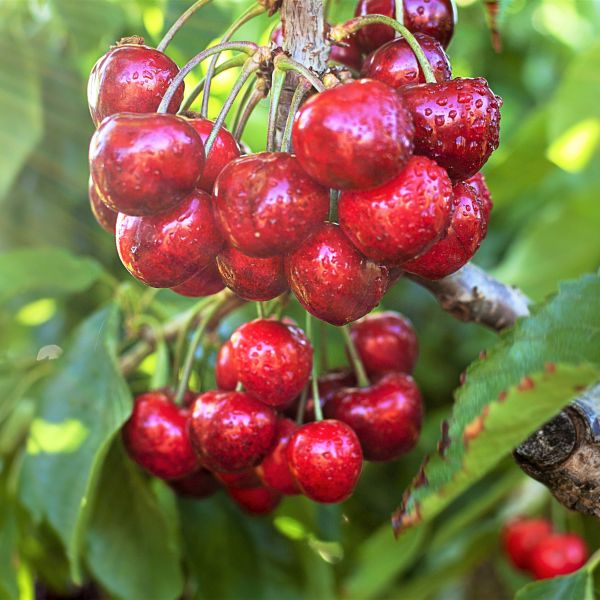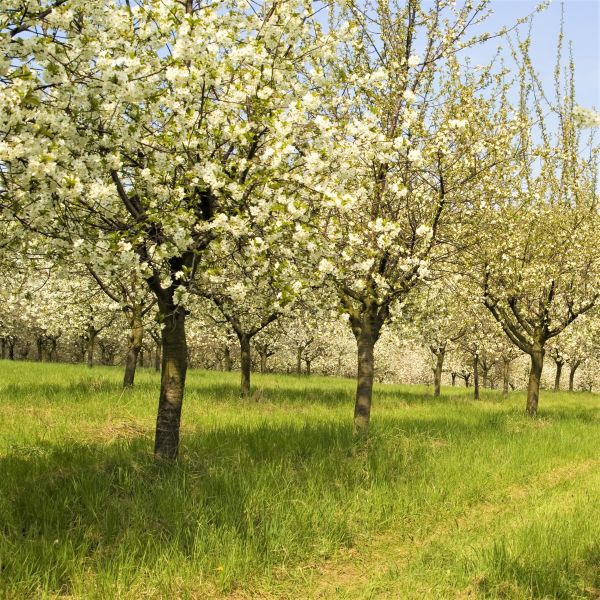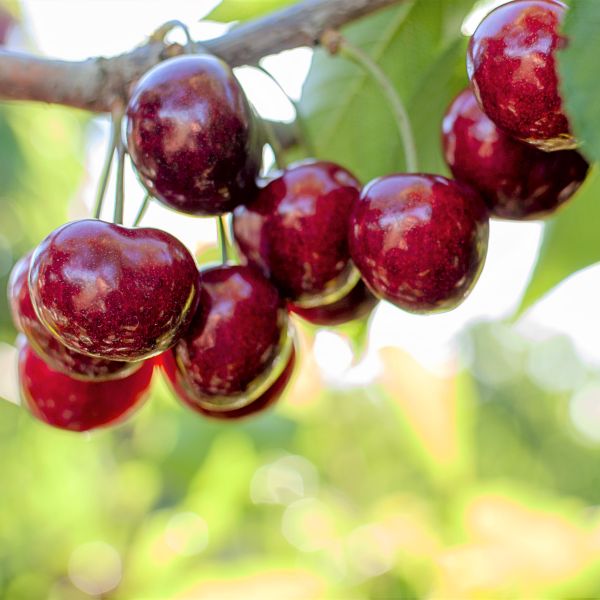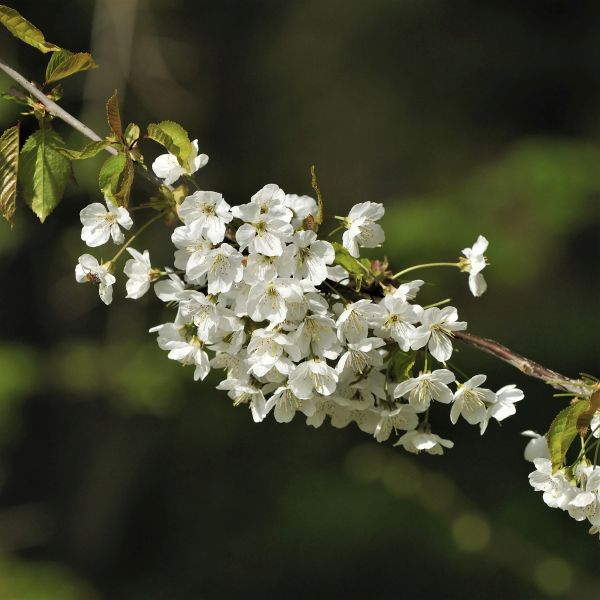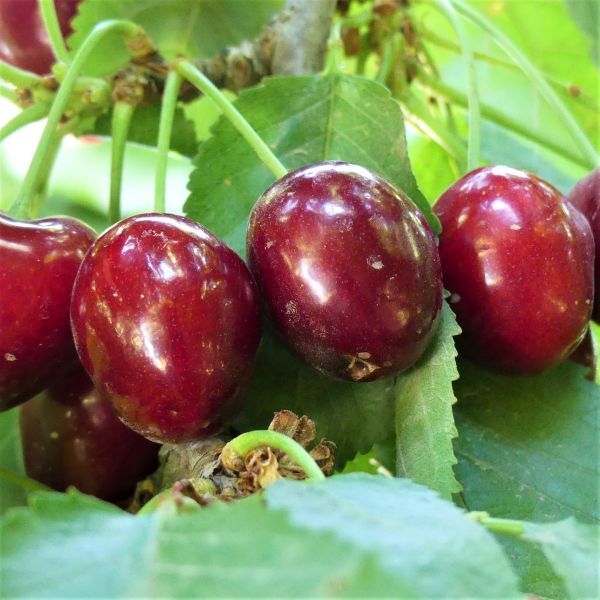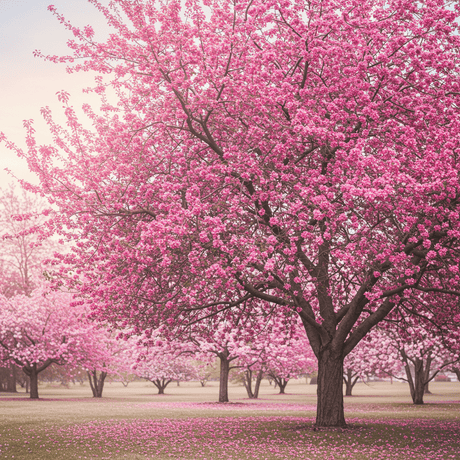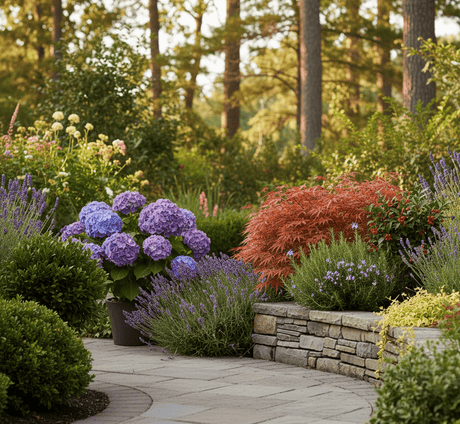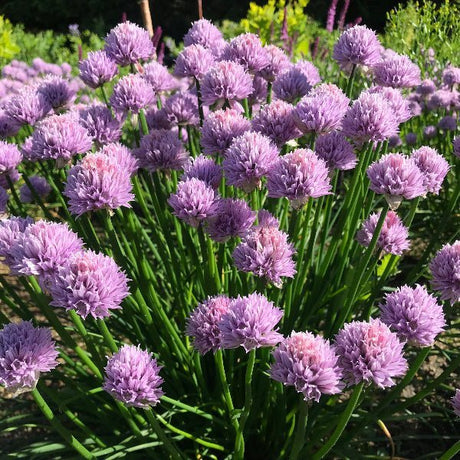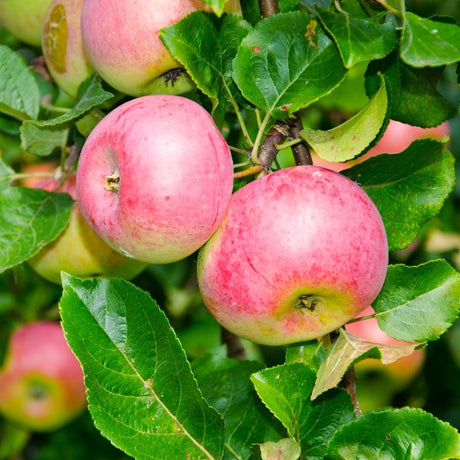Stella Cherry Tree
Prunus avium 'Stella'
Plant Sentry™
Plant Sentry™

Plant Sentry™ Protected
Your order is protected by our compliance system that:
- Prevents restricted plants from shipping to your state
- Ensures plants meet your state's agricultural requirements
- Protects gardens from invasive pests and diseases
Delivery and Shipping
Delivery and Shipping
Delivery and Shipping
Fast, Safe Plant Delivery
Ships in 3-4 business days • Tracking provided • Weather protected
| Under $50 | $9.99 |
| $50 - $99.99 | $14.99 |
| $100 - $149.99 | $16.99 |
| $150 - $198.99 | $24.99 |
| $199+ | FREE |
✓ Zone-specific timing • ✓ Professional packaging • ✓ Health guarantee
Understanding Plant Options
Nature Hills offers plants in two main formats:
- Container Plants: Grown in pots with soil, sized by container volume and plant age
- Bare Root Plants: Dormant plants without soil, sized by height measurements
Container Plant Sizes
Container sizes indicate plant age and growing capacity rather than liquid volume equivalents. Our containers follow industry-standard nursery "trade gallon" specifications, which differ from standard liquid gallon measurements.
Young Plants (6 months to 18 months old)
| Container Size | Actual Volume | Metric Equivalent |
|---|---|---|
| 2" x 2" x 3" | 0.18 - 0.21 dry quarts | 0.20 - 0.23 dry liters |
| 4" Container | 0.31 - 0.87 dry quarts | 0.35 - 0.96 dry liters |
| 4.5" Container | 0.65 dry quarts | 0.72 dry liters |
| 6" Container | 1.4 dry quarts | 1.59 dry liters |
| 1 Quart | 1 dry quart | 1.1 dry liters |
| 5.5" Container | 1.89 dry quarts | 2.08 dry liters |
Established Plants (18 months to 2.5 years old)
| Container Size | Actual Volume | Metric Equivalent |
|---|---|---|
| 2 Quart | 2 dry quarts | 2.2 dry liters |
| #1 Container | 2.26 - 3.73 dry quarts | 2.49 - 4.11 dry liters |
| 5" x 5" x 12" | 3.5 - 4.3 dry quarts | 3.85 - 4.74 dry liters |
Mature Plants (2-4 years old)
| Container Size | Actual Volume | Metric Equivalent |
|---|---|---|
| #2 Container | 1.19 - 1.76 dry gallons | 5.24 - 7.75 dry liters |
| #3 Container | 2.15 - 2.76 dry gallons | 8.14 - 12.16 dry liters |
Large Plants (3-5 years old)
| Container Size | Actual Volume | Metric Equivalent |
|---|---|---|
| #5 Container | 2.92 - 4.62 dry gallons | 12.86 - 20.35 dry liters |
| #6 Container | 5.25 - 6.01 dry gallons | 23.12 - 26.42 dry liters |
| #7 Container | 5.98 - 6.53 dry gallons | 26.34 - 28.76 dry liters |
Bare Root Plants
Bare root plants are sold by height from the root system to the top of the plant. Plants may exceed minimum height requirements.
Common Sizes:
- Trees: 1 foot, 2 feet, 3 feet, 4 feet, 5 feet, 6 feet
- Shrubs & Perennials: 1 foot, 18 inches, 2 feet
Important Notes
Container Volume Specifications
- Trade Gallon Standard: Our containers follow industry-standard "trade gallon" specifications established by the American National Standards Institute (ANSI Z60.1) for nursery stock
- Volume Variations: Actual soil volume may vary due to plant root systems and growing medium settlement
- Age Indicators: Container size primarily indicates plant age and maturity rather than liquid volume equivalents
Growing Conditions
- Plant size can vary based on variety and growing conditions
- Container size helps indicate plant maturity and establishment level
- Larger containers generally mean more established root systems and faster landscape establishment
Seasonal Availability
- Bare root plants are available seasonally when dormant
- Container plants are available throughout the growing season
- Specific varieties may have limited availability in certain sizes
Questions?
For questions about specific plant sizes or availability, please contact our plant experts who can help you choose the right size for your landscape needs.

Plant Sentry™ Protected
Your order is protected by our compliance system that:
- Prevents restricted plants from shipping to your state
- Ensures plants meet your state's agricultural requirements
- Protects gardens from invasive pests and diseases
Plant Profile & Growing Essentials
Cold hardy, Self-pollinating, Flowering, Edible, Ornamental Berries/Fruit, Thornless, and Attracts pollinators
-
Botanical Name
-
Height
-
Width
-
Growing Zones
-
Sunlight
-
Growth RateModerate
-
Flower Color
-
Leaf Color
-
Pollinator FriendlyYes
-
Pollinator Required
-
Bloom PeriodLate Spring
-
FragrantYes
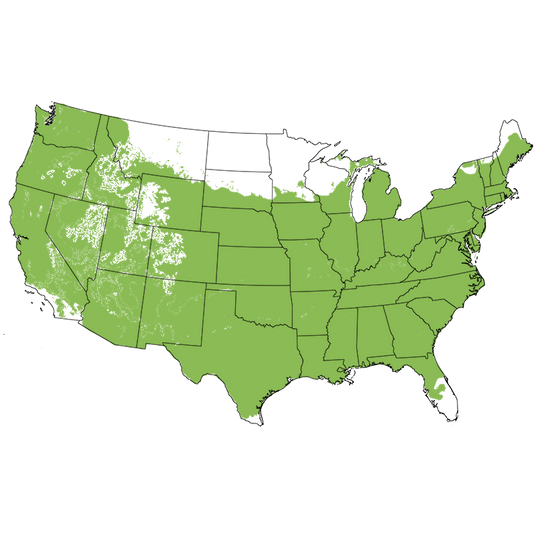
Growing Zones 5-9
Self-Pollinating Sweet Stella Cherry Tree
- Black-Red Heart-Shaped Fruit
- Sweet Flavorful Cherries
- Dark Red Fruit
- Fruit Resists Splitting
- Upright Compact Habit
- Self-Fruitful
- Spring White Blossoms
- Beneficial to Pollinators
- Full Sun!
- Preserves & Baking
- Store & Freeze Great!
- Excellent Pollinator for Other Cherry
- Disease Resistant Semi-Dwarf Form
- Requires at Least 400 Chill Hours
The Stella Cherry Tree (Prunus avium 'Stella') is a compact, self-fruitful Cherry tree which produces an abundance of heart-shaped, shiny fruit. Each gorgeous gem that adorns this tree in summer is a juicy Cherry that is blackish-red fruit with succulent red flesh.
Compact and sporting bright-green leaves, the tree naturally grows in a tight, upright character, making it an ideal choice for the home garden and a real space saver!
Lovely white blooms smother the tree in the early spring and are delightfully fragrant. They are immediately enjoyed by your local pollinators. Blooms are quickly followed mid-summer by clusters of shiny, dark red, nearly black sweet cherries.
Stella produces red Cherries that are especially sweet, plump and firm. They resist the cracking and splitting that you see with some Cherry varieties, which is a problem in areas with high summer rainfall.
Stella produces so well you'll have a bounty of Cherries to eat, bake with and store, and even more to share!
How to use Stella Cherry Tree in the Landscape
The lovely display of white flowers in spring makes these highly ornamental specimens and their size makes them perfect for front or back garden use. As a lovely dual-purpose tree for your landscape, don't be afraid to use Stella as you would any other blooming tree!
Semi-dwarf Stella Cherry trees are tall enough to provide great shade, you can leave your tree as a more shrub form or with just a bit of pruning, create a lovely shade tree by your back patio! Creating a double-duty Edible Landscaping doesn't have to be boring! Stella will be a phenomenally beautiful addition to any site!
You can use the Stella as a single specimen or create a home orchard with 2 or more for even more variety to your Sweet Cherry Tree harvest.
They are precocious, which means they bear fruit at a young age, so you won't have long to wait for your first harvest! These high-quality trees produce fruiting around 3 - 5 years of age.
Stella Cherries are excellent when eaten fresh right off the tree and still warm from the sun! Stella trees are amazing when baked into pies and pastries that will have everyone raving! To save your bountiful harvest, Stella is firm enough fruit for you to make them into jellies and preserves! Versatile, they're perfect for a wide variety of other dishes. They also store and freeze well.
#ProPlantTips for Care
Fruit trees all do their absolute best in full sun! You'll have fewer flowers and therefore less fruit when planted in anything less. Stella is cold hardy down to USDA hardiness zones 5-9!
Stella cherry trees are widely adaptable to a broad range of soil types, but they prefer moist, well-drained soil for the best tasting, largest fruit. Neutral pH, on the ever so slightly acidic side between 6-7, is also best.
Water fruit trees very well while they are establishing that first year after planting into your landscape and during fruiting season, to have the juiciest, plumpest fruit possible!
All of your wildlife and local pollinators will thank you for adding one to their habitat, although you may have to fight the birds from time to time for your harvest. Stella's compact habit makes it easy to maintain the tree's height for making bird netting a breeze.
A generous layer of mulch over the root system helps retain soil moisture as well as insulate the root ball from heat and chill. Be sure to never pile mulch up over the trunk of the tree and spread it in a layer that's about 3-4" thick.
The Stella Cherry tree is self-fruitful but is an excellent pollinator to other cherry trees as well.
Order one for your garden today from the experts at Nature Hills Nursery and begin your journey towards a bountiful, Cherry filled future!
Stella Cherry Tree Frequently Asked Questions
How big does a Stella Cherry Tree get?
The semi-dwarf Stella Cherry Trees have a mature height of 15 - 18 feet and a mature spread of also, 15 - 18 feet in optimal conditions.
Are Stella Cherry Trees good?
Stella Cherry Trees are fantastic sweet, flavorful fruit trees that are self-fertile and have both a convenient semi-dwarf form and low chill hours!
How long does it take for Stella Cherry Trees to bear fruit?
Nature Hills Nursery sells fruit trees with mature root systems, and will often set fruit in their second or third years.
How Fast Do Stella Cherry Trees Grow?
Cherry trees are medium growth rate plants and once they are established they can add 12-18 inches per year or so if given the ideal growing conditions.
How do you care for a shrub nearly Wild Rose?
Cherry trees grow best in well-drained, fertile soil in at least 6 hours of full sun per day or more. Morning sun is a plus and planting any fruit tree where there is good air circulation keeps the plants stress-free.
Do You Need 2 Cherry Trees to Produce Fruit? Do Stella Cherry Trees Need a Pollinator?
All Prunus varieties have different requirements to set fruit. Stella is self-fruiting and doesn't need a pollinating partner, but will bear more fruit when paired with a partner that flowers at the same time.
No room? Look into High-Density Planting techniques, or choose a semi-dwarf or dwarf fruit tree.
When Should Stella Cherry Trees be Planted?
Bareroot cherry trees are best planted in the spring but container-grown cherry trees can be successfully transplanted all throughout the growing season as long as the ground isn’t frozen and they are carefully watered as needed. Check for first and last frost dates for your area with your local County Extension Office.
How Do I Find Stella Cherry Trees for Sale Near Me?
Make your life easier and your yard happier by shopping for cherry trees at NatureHills.com online fruit tree nursery. You’ll find a massive selection of fruit trees for sale, including many lovely cherry tree varieties!
Choose the right tree for your area by first finding your growing zone by entering your zip code in the field above the Plant Highlights section on our product pages. Narrow down your options by plant hardiness zone, sun availability, and size requirements.
Place your order, knowing it’s backed by the Nature Hills Nursery product guarantee and protected by Plant Sentry™, which helps ensure regulated plant materials aren’t sent to prohibited areas.
Expect to receive your plants at the appropriate planting time for your growing zone when temperatures are safest.
One of the First Self-fruitful Sweet Cherry Trees
The Stella Cherry was the first readily available self-fruitful variety of sweet cherry offered and was introduced by the world famous Agricultural Research Station in Summerland, British Columbia. Though not an immediate hit with the commercial market, Stella is the forerunner to some of the most important cherry varieties on the market today.
Beginning in 1956, Dr Charles Lapins of the Summerland Research Station crossed the Lambert Cherry, a popular commercial sweet cherry of the time, with a known self-fruitful selection, John Innes 2420, possibly a seedling of Emperor Francis x Napoleon, from the John Innes institute in Norwich, England.
Stella was then selected from the seedlings of this cross in 1964. Once the evaluation was completed, Stella Cherry's introduction occurred in 1973.
Though not a complete commercial success, Stella Cherry took the home garden market by storm. In the 1970's as home lots sizes grew smaller - the notion giving space to two cherry trees to act as pollinating partner became a challenge to accommodate. For home gardeners, the idea of a self-fruitful cherry tree was welcomed with open arms.
In 1980's, the Stella Cherry became one of the top selling varieties to the home garden market. The added benefit of its ability to pollinate other popular varieties only increased its popularity. Since this time the Summerland Research Station has released many of the most popular, best tasting and most productive varieties of self-fruitful cherries now available to the home garden market.

